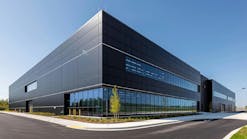Like many other industries, security has been marked in recent years by a number of notable mergers and acquisitions (M&A) as manufacturers and both residential and commercial integrators look to set themselves apart in the marketplace. But no firm has leveraged M&A to increase its footprint quite like Convergint Technologies, which has made 35 acquisitions since 2014.
Even in the midst of the pandemic-ravaged year that was 2020, the Illinois-based integrator managed to extend its geographic reach in Latin America via a partnership with Seal Telecom as well as in Australia with its purchase last February of Cerberus Technologies, the company’s second acquisition in the country. Convergint also expanded its capabilities in the healthcare and financial service verticals last year with the acquisitions of Innovative Medical Systems (IMS) and Smith Hamilton, Inc.
According to Mike Mathes, Executive Vice President and one of the earliest colleagues to join the Convergint team, the company engaged in limited M&A transactions during the first 12 years of its existence and instead decided to focus on organic growth with tremendous results, however; following their partnerships with private equity – beginning in 2012 with KRG and later with Ares Management in 2018 – they found themselves with the resources to pursue M&A more fervently.
“We have done an effective job of building a very strong platform,” Mathes says. “Our approach to M&A – I don’t want to call it unique because I’m sure others think of it in this way – has been one of looking for companies that have a strong cultural fit. If you have done any research on Convergint you will hear about us talking about culture, our values, and beliefs and how critical and foundational they are and how they are in the fabric of our organization. So, when we are looking at potential acquisitions, it is so important that they fit from a cultural perspective and the quickest way to sort of get off the list of potential acquisitions is to not be a cultural fit.”
A Different View on M&A
Additionally, Mathes said they do not just view acquisitions through the prism of buying out the competition and folding them into the larger organization but rather assessing the overall value they can bring to the company and their customers.
“We don’t necessarily have a license on all the best ideas and there are many people that have joined Convergint through an acquisition and have gone on to have incredible careers within the organization, expand their responsibilities and grow within the organization,” Mathes explains. “We’re definitely looking for people to join and not just get acquired.”
Another thing that Mathes says really sets the company apart when it comes to their M&A strategy is that they do not look for synergies in the traditional sense, such as taking cost out of a company to realize additional profit on the bottom line.
“Every single acquisition we’ve done, 12 months after we’ve had them on we’ve had more people involved in that business than they did on the day of acquisition,” he adds. “The synergies we’re looking for is how do we take this organization that has joined our team and leverage what else Convergint has and leverage them so that together we bring more business in the door.”
Pandemic Challenges
Despite their continued growth, Convergint, like many other integrators, has not gone unscathed during the coronavirus outbreak. Convergint was forced to furlough some of its workers and many employees also saw their salaries reduced during the early stages of the pandemic as the company undertook measures to deal with the sudden financial pressures brought on by Covid-19.
However, as the months wore on and the company gradually adjusted to this new normal, Mathes says that “for the most part,” workers that were coming back from furlough are on the job again and that Convergint’s performance coming out of that April/May 2020 timeframe has been strong with single digit growth on both the top and bottom lines for the year.
“Would we, in a normal year, want to see more growth? Sure, we would, but I think for a pandemic year we are pretty excited about the fact that we were able to see that growth,” Mathes says. “Any actions we’ve taken or thought we would have to take from a financial perspective with our colleagues, all of them have been reversed and, if anything, we’ve gone forward with both continued hiring and growth.”
In fact, Mathes credits the company’s diverse geographic reach and customer base with helping them weather some of the challenges presented by the pandemic. “We have no single customer that is more than 4% of our revenue and we’re diverse from a vertical market perspective,” he adds.
For better or worse, mitigating the spread of Covid-19 has also led many organizations to adopt a variety of new security technologies, such as temperature screening, occupancy monitoring, and mask detection solutions, that at one time would have seem liked a far fetch need. And while demand for some of these products may wane in concert with the virus’ prevalence in society, Mathes believes there may still be a place for some of them in certain businesses.
“If you were to move forward and say, ‘we’re going to incorporate thermal imaging in the entryway and be able to notify you if anyone is sick with anything, even post-Covid,’ I think it might be an interesting feature that somebody would say, ‘that’s probably a good thing for us to know if we’ve got a colleague or visitor coming in and we know that,’” he says. “I think there will be a place for it, but I don’t think it will necessarily have the same level of urgency around it as it did in the early days of the pandemic.”
Joel Griffin is the Editor-in-Chief of SecurityInfoWatch.com and a veteran security journalist. You can reach him at [email protected].



